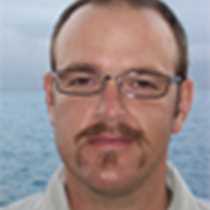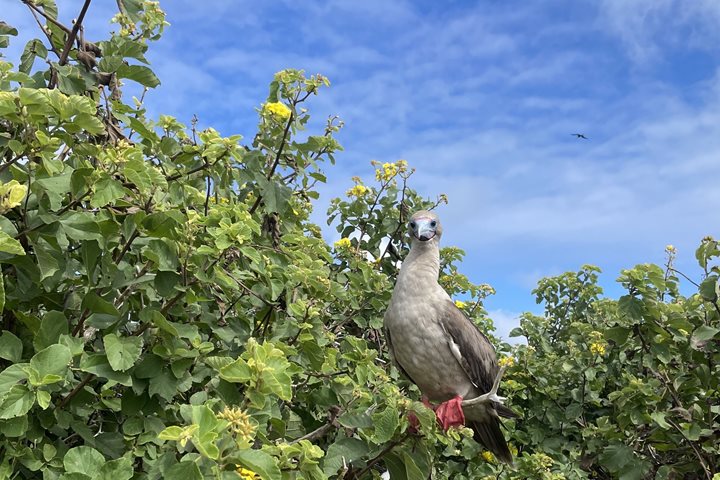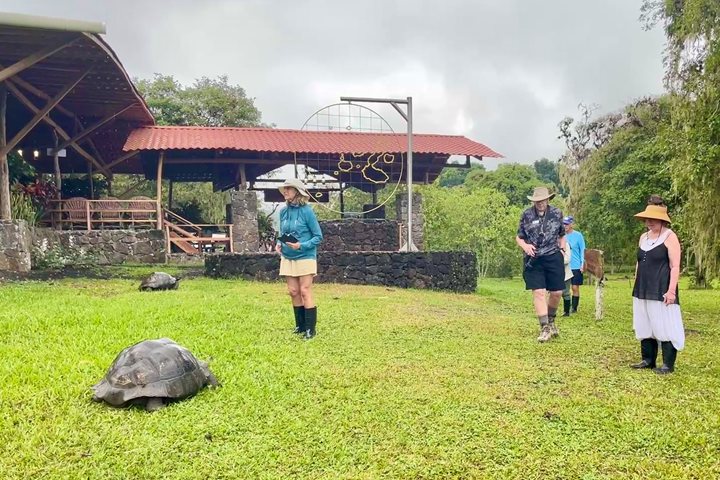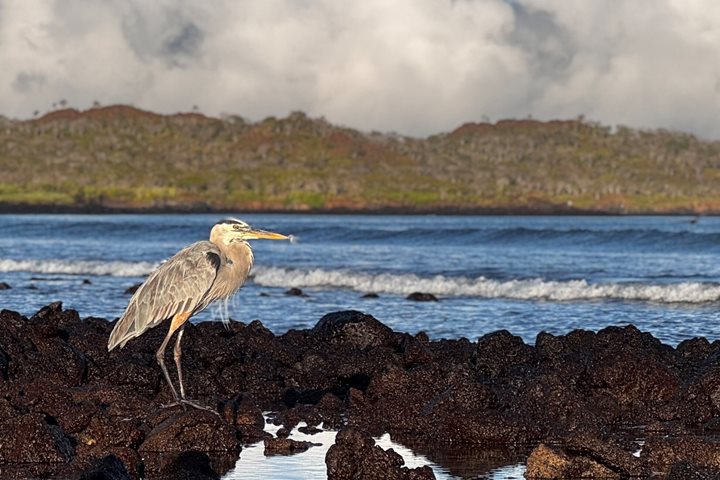Our journey continued as we arrived at North Seymour Island, an uplifted volcanic island in the center of the Galapagos archipelago. North Seymour has an abundance of life with frigatebirds, blue-footed boobies, and Galapagos land iguanas. Inland, frigatebirds displayed for potential mates. They showed off their impressive inflated gular sac while shaking their wings and making a guttural clicking noise. It was quite a show. Blue-footed boobies are starting nests right now, and one showed us the three eggs being incubated. Land iguanas foraged on fresh vegetation, indifferent to us as we passed. Upon returning to National Geographic Endeavour II, a feeding frenzy began as blue-footed boobies, Galapagos sharks, sardines, brown noddy terns, and Galapagos shearwaters took part in the feast. After an incredible morning, we started our afternoon on Rabida Island, a dark red island that shows off its volcanic past. A snorkel along the coast brought us in contact with Pacific green sea turtles, Galapagos sea lions, and an array of reef fish. As the sun dipped below the horizon, we took a short walk to a brackish pond to enjoy American flamingos on full display. What a great finish to our first full day in the archipelago.
5/29/2025
Read
National Geographic Gemini
Genovesa Island
Genovesa is considered one of the Galapagos crown jewels, and today it was showing off all of its splendor. Immediately after breakfast we put on our sturdy shoes and set out to explore Prince Philip’s Steps. This area is known for opportunities to observe not only large colonies of nesting Nazca and red-footed boobies, but maybe, just maybe, the short-eared owl which exhibits diurnal behavior on this island. After this walk we got ready for a dip in the Pacific Ocean and snorkeling along the inner coast of this caldera. The afternoon was equally amazing as we disembarked to explore Darwin Bay, along a short and easy trail that was packed with wildlife. Here we observed not only nesting frigatebirds, red-footed boobies, and Nazca boobies, but also a few yellow-crowned night herons. It was another incredible afternoon in the Galapagos Islands.







